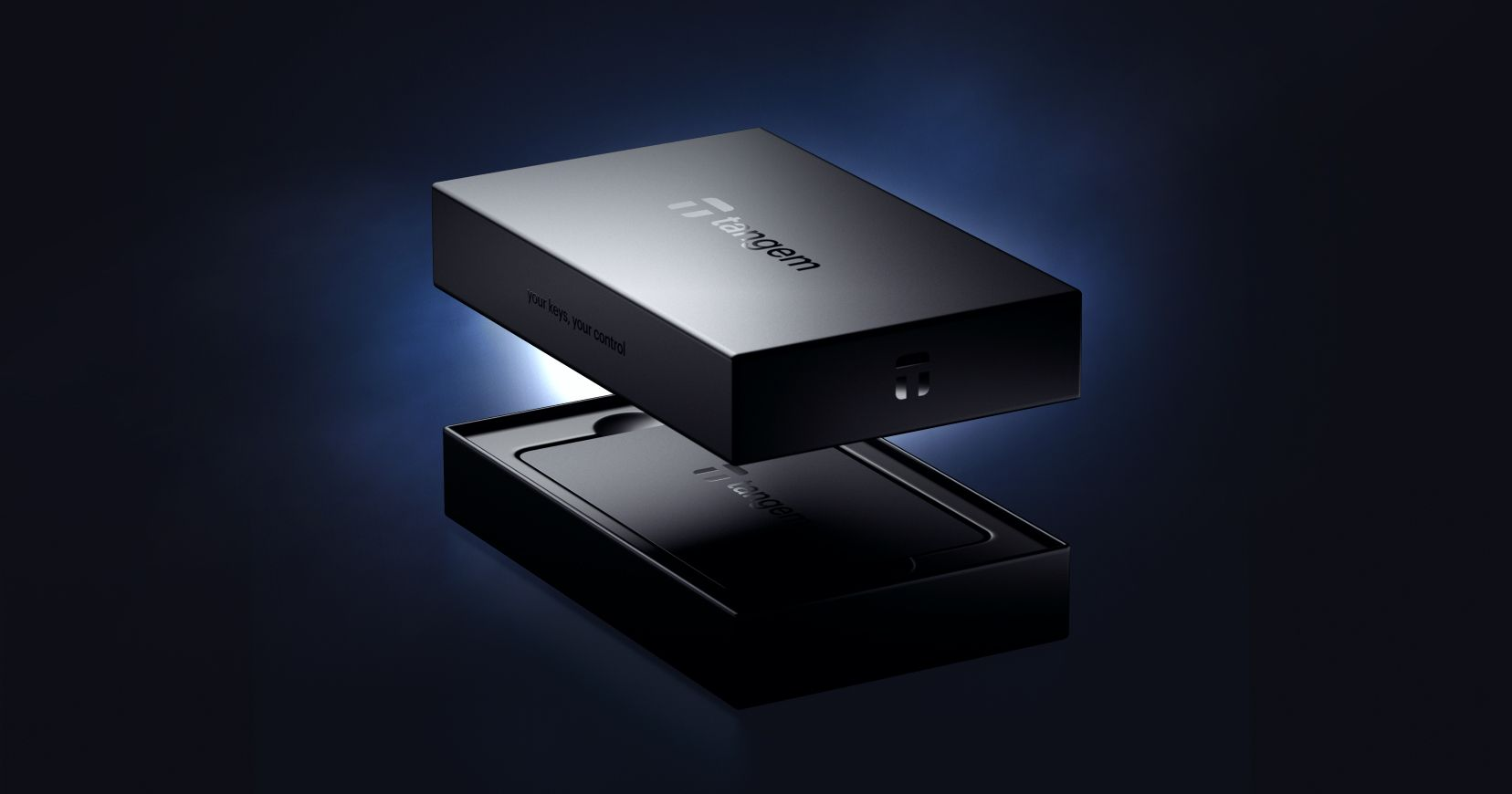Tangem vs Trezor – Which Cold Wallet Should You Choose?
Why Tangem’s Seedless Hardware Wallet Redefines Crypto Security.

AI summary
The article compares Tangem and Trezor, two leading crypto cold wallets in 2025, highlighting their distinct approaches to security and usability. Tangem offers a seedless, NFC-based, mobile-friendly wallet ideal for beginners and those seeking simplicity and offline protection, while Trezor provides a traditional USB-based experience with seed phrase recovery and advanced features for more tech-savvy users. Ultimately, the choice depends on whether users prioritize ease of use and mobile access (Tangem) or advanced compatibility and established recovery methods (Trezor).
Securing your crypto starts with picking the right cold wallet. In 2025, Tangem and Trezor stand out as two of the most popular choices, but they offer very different approaches to security and usability. If you’re new to crypto and want a simple setup, or you’re an experienced holder who prefers traditional methods, knowing their differences will help you choose the wallet that fits your needs best.
Overview: Two Different Approaches to Security
Tangem is a seedless hardware wallet that uses NFC tap-and-go cards. It focuses on simplicity, mobility, and complete offline protection.
Trezor – works as a classic USB-based wallet with a built-in screen, a seed phrase backup, and full compatibility with desktop apps.
Tangem vs Trezor – Key Features Compared
Feature | Tangem | Trezor |
|---|---|---|
Security | Air-gapped, seedless, EAL6+ secure chip | USB-based, seed phrase backup |
Recovery | Multi-card chip-to-chip backup (no seed phrase) | 12/24-word seed phrase required |
Interface | Tap card to smartphone (iOS/Android) | USB connection with the desktop app |
Open-source | Open-source app + audited firmware | Open-source firmware and software |
Coin Support | 6,000+ coins & tokens across major blockchains | 9,000+ coins & tokens, wide compatibility |
Backup & Recovery
Tangem Wallet
Tangem replaces the traditional seed phrase with backup cards created during setup. Each card works as a secure copy of the wallet, allowing you to restore funds if one is lost. This seedless hardware wallet design removes the risks of writing down or exposing a recovery phrase.
Pros:
- No seed phrases to manage or accidentally expose
- Beginner-friendly recovery with simple backup cards
- Extra cards provide redundancy for added safety.
Cons:
- No cons.
Trezor
Trezor relies on the standard 12- or 24-word recovery seed, which users must write down and protect. It also supports Shamir backup, which lets you split the seed into multiple parts for stronger security.
Pros:
- Time-tested and widely trusted recovery method
- Shamir backup reduces the risks of single-point failures.
- Seed compatibility across wallets adds flexibility.
Cons:
- Recovery phrases remain vulnerable to loss, theft, or phishing
- Non-technical users can find Shamir backups complicated.
- Physical damage can still affect paper backups.
Security Comparison
Tangem stays fully air-gapped with no physical connectors, reducing potential attack surfaces. As a seedless hardware wallet, it eliminates exposure to recovery phrases and keeps storage entirely offline. Trezor connects via USB and relies on a computer for operation, creating more possible attack entry points.
Usability & Setup
Tangem Wallet pairs instantly with a smartphone through NFC, requiring no desktop or cable setup. The process takes just minutes and feels seamless for beginners.
Trezor – requires setup through a desktop or browser, which makes it slightly more complex and time-intensive for first-time users.
Price & Value
Tangem offers a lower entry cost while providing secure cold storage and a straightforward user experience.
Trezor Model T – carries a higher price tag but includes premium features such as a touchscreen and wide third-party integrations.
Ideal User Profiles
Tangem works best for mobile-first users, frequent travelers, or those looking to gift an easy-to-use wallet. Trezor suits more tech-savvy holders and power users who value advanced features and broad software compatibility.
FAQ about Tangem vs Trezor
Is Tangem more secure than Trezor?
Both wallets are secure, but in different ways. Tangem functions as a seedless hardware wallet, removing the risks tied to recovery phrases. Trezor relies on the traditional seed phrase method, which is proven but also vulnerable if mishandled.
Does Trezor support more coins?
Yes. Trezor supports over 9,000 assets, while Tangem currently handles more than 6,000. Both cover all major blockchains.
Can I use both without a computer?
Tangem works directly with smartphones via NFC, so you never need a computer. Trezor, however, requires a desktop or laptop for setup and ongoing use.
Which one is better for beginners?
Tangem offers the simplest experience with quick setup, mobile pairing, and no seed phrases to manage, making it more beginner-friendly. Trezor suits users who don’t mind a learning curve and prefer traditional methods.
Final Thoughts – Which Wallet Should You Get?
Tangem and Trezor deliver reliable cold storage, but their approaches differ. Trezor has earned a long-standing reputation and offers broad integrations, yet it still relies on seed phrases and a desktop setup — two pain points that many users struggle with.
Tangem, on the other hand, represents the next generation of cold storage. As a seedless hardware wallet, it removes the risks of recovery phrases, pairs instantly with your smartphone, and stays fully offline for maximum security. Its card-based design makes it portable, durable, and beginner-friendly, offering strong protection for experienced holders.
